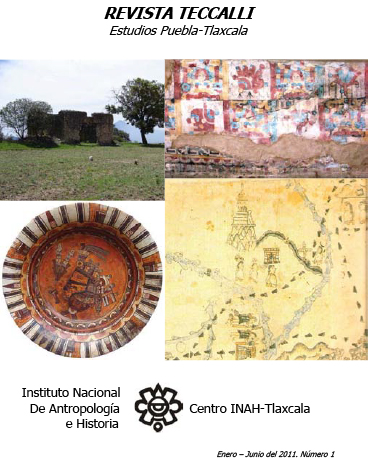Publicado 2022-08-08
Palabras clave
- Agricultura,
- Centro de México,
- Época postclásica
Derechos de autor 2011 Instituto Nacional de Antropología e Historia

Esta obra está bajo una licencia internacional Creative Commons Atribución 4.0.
Cómo citar
Resumen
Durante la época prehispánica la agricultura fue una base fundamental del sustento de las poblaciones indígenas. El arreglo económico desarrollado por las poblaciones del Postclásico en el centro de México involucró una marcada división entre el tipo de agricultura que se realizó a nivel político y de los conjuntos domésticos del sector comunal. Dos distintas y complementarias estrategias de producción de alimentos de las comunidades del Postclásico fueron la agricultura de subsistencia y la agricultura institucional. En este trabajo exploro las metas y funciones de estas dos formas de agricultura debido a que proporcionan la base para el análisis de los sistemas agrícolas prehispánicos en el altiplano central mesoamericano.
Descargas
Referencias
- Almazan, Marco A. 1999 The Aztecs States-Society: Roots of Civil Society and Social Capital. Annals of the American Academy of Political and Social Science 565:162-175.
- Beets, Willem C. 1990 Raising and Sustaining Productivity of Smallholder Farming Systems in the Tropics: A Handbook of Sustainable Agricultural Development. AgBé Publishing, Alkmaar.
- Brookfield, Harold. 1972 Intensification and Disintensification in Pacific Agriculture. Pacific Viewpoint 13:30-48. 2001 Intensification, and Alternative Approaches to Agricultural Change. Asia Pacific Viewpoint 42(2/3):181-192.
- Brumfiel, Elizabeth y Timothy K. Earle. 1987 Specialization, Exchange and Complex Societies: An Introduction. En Specialization, Exchange and Complex Societies, editado por E. Brumfiel y T. K. Earle. vol. 1-9. Cambridge University Press, Cambridge.
- Calnek, Edward E. 1992 Patrón de Asentamiento y Agricultura de Chinampas en Tenochtitlán. En Chinampas Prehispánicas, editado por C. J. González, pp. 155-178. INAH, México, D.F.
- Chayanov, Aleksandr V. 1966 The Theory of Peasant Economy. The American Economic Association, Homewood.
- Chibnik, Michael. 1984 A Cross-cultural Examination of Chayanov's Theory. Current Anthropology 25(3):335-340.
- The Economic Effects of Household Demography: A Cross-Culture Assessment of Chayanov's Theory. En Household Economies and Their Transformations, editado por M. D. Maclachlan, 1987, pp. 74-106. Monographs in Economic Anthropology No. 3. Univeristy Press of America, Lanham.
- D'Altroy, Terence N. y Timothy K. Earle 1985 Staple Finance, Wealth Finance, and Storage in the Inka Political Economy. Current Anthropology 26(2):187-206.
- Durrenberger, E. Paul. 1980 Chayanov's Economic Analysis in Anthropology. Journal of Anthropological Research 36:133-148.
- Earle, T. K. 2000 Archaeology, Property, and Prehistory. Annual Review of Anthropology 29:39-60.
- Fedick, Scott L. 1996 An Interpretative Kaleidoscope: Alternative Perspectives on Ancient Agricultural Landscapes of the Maya Lowlands. En The Managed Mosaic: Ancient Maya Agriculture and Resource Use, editado por S. L. Fedick, pp. 107-131. University of Utah Press, Salt Lake City.
- Flannery, Kent V. 1999 Process and Agency in Early State Formation. Cambridge Archaeological Journal 9(1):3-21.
- González Huerta, Andrés, Luis Miguel Vázquez García, Jaime Sahagún Castellanos, Juan Enrique Rodríguez Pérez y Delfina de Jesús Pérez López. 2007 Rendimiento del mapiz de temporal y su relación con la pudrición de la mazorca. Agricultura Técnica en México 33(1):33-42.
- Hirth, Kenneth G. 1996 Political Economy and Archaeology: Perspectives on Exchange and Production. Journal of Archaeological Research 4(3):203-239. 2007 Housework: Craft Production, Risk, and Domestic Economy in Mesoamerica. Housework: Specialization, Household Economy and Domestic Craft Production in Mesoamerica 2007 meeting of the Society for American Archaeology, Austin, Texas.
- Janusek, John Wayne y Alan L. Kolata. 2004 Top-down or bottom-up: rural settlement and raised field agriculture in the Lake Titicaca Basin, Bolivia. Journal of Anthropological Archaeology 23:404-430.
- Johnson, Allen W. y Timothy Earle. 1987 The Evolution of Human Societies: From Foraging Group to Agrarian State. stanford University Press, Stanford.
- Kirkby, Anne V. T. 1973. En The Use of Land and Water Resources in the Past and Present Valley of Oaxaca, Mexico. Prehistory and Human Ecology of the Valley of Oaxaca. vol. 1, K. V. Flannery, editor general. Memoirs of the Museum of Anthropology no. 5, University of Michigan, Ann Arbor.
- Kowalewski, Stephen A. y Robert D. Drennan. 1989 Prehispanic settlement patterns in Tlacolula, Etla, and Ocotlan, the Valley of Oaxaca, Mexico. Monte Alban's Hinterland. 2 vols. Regents of the University of Michigan, the Museum of Anthropology, Ann Arbor.
- Logan, Michael H. y William T. Sanders. 1976 The Model. En The Valley of Mexico: Studies in Pre-Hispanic Ecology and Society, editado por E. R. Wolf, pp. 31-58. University of New Mexico Press, Albuquerque.
- Netting, Robert McC.. 1993 Smallholders, Householders: Farm Families and the Ecology of Intensive, Sustainable Agriculture. Stanford University Press, Stanford.
- Palerm, Ángel. 1955 The Agricultural Basis of Urban Civilization in Mesoamerica. En Irrigation Civilizations: A Comparative Study, editado por J. H. Steward. Social Science Monographs 1. Pan American Union, Washington, D.C.
- Parsons, Jeffrey R. 1991 Political Implications of Prehispanic Chinampa Agriculture in the Valley of Mexico. En Land and Politics in the Valley of Mexico: A Two-Thousand-Year Perspective, editado por H. R. Harvey, pp. 17-43. University of New Mexico Press, Albuquerque.
- Reed, David M. 1998 Ancient Maya Diet at Copán, Honduras. Unpublished Ph.D. Dissertation, Department

